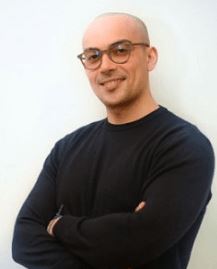What makes a year unique is the fact that key moments vary from one person to another. This is also the case for companies for which 2018 has been special thanks to the launch of new productions, acquisitions or partnerships. Let’s discover the key numbers of 2018:
4
To date, innovations have been observed in the art, fashion, architecture, construction, medicine, aerospace and automotive sectors.
Designers and shoe brands are increasingly using 3D printing for their creations. As far as shoes are concerned our only regret is that they are often available in a limited edition, whereas we question the “wearability” of clothes manufactured using 3D printing.
In the construction sector, the use of additive manufacturing raises sustainability and housing issues for impoverished populations around the world. In addition, this year was special for families that experienced for the first-time social housing such as Yhnova built using 3D printing.
Medicine, aerospace and automotive sectors contribute the most to the growth of the industry. However, four sectors increasingly arouse interest among industrials and benefit from investments: railways, processing industries, e-commerce and logistics.
10
Many technology centers have been opened around the world to advance new technologies.
10 digital centers have been opened in geographic areas with high development potential. Some of these centers are the result of partnerships between various players of the industry. These centers include the opening of: the Birmingham technology center by Autodesk, the digital manufacturing center in China by HP, in Singapore by DNV GL on the one hand, and by SIAEC and Stratasys on the other hand, the AM center of Israel opened by XJET, the AM center in California by Renishaw, in Exton (USA) by Arkema, in Massachusetts by Dassault Systèmes and UMass Lowell, in Düsseldorf (Germany) by EOS, and the opening of a center in Italy by WASP.
In addition to these centers, the market also celebrated a large number of partnerships in different sectors to advance the adoption of additive manufacturing in terms of research and development, technology commercialization and specific projects.
50
50 spokespersons from additive manufacturing companies shared their views of the sector in our “Opinion of the Week” segment. In order to better apprehend 2019, you will be able to (re)discover, among the key interviews, what our analysts think about the 2018 3D printer market and the 2018 3D metal printing market.
Additive Manufacturing companies also share in this article their point of view of 2018 and expectations for 2019
For this last article about 2018, we asked some companies from various areas of the industry what they thought about the 3D printing market in 2018 and their expectations for 2019. Discover their answers below:
 Scott Sevcik, Vice President of Manufacturing Solutions @ Stratasys
Scott Sevcik, Vice President of Manufacturing Solutions @ Stratasys
“We’re finally seeing the evolution of additive manufacturing beyond rapid prototyping to serial production parts for the assembly line. Especially in automotive and aerospace production environments, additive is becoming a common fixture on the factory floor across the supply chain – for both custom tooling and final parts.”
“In 2019, we’ll witness the increased adoption of standards in the industry. Stratasys already has major OEMs and Tier-one suppliers pushing specifications down into the supply chain. As this happens, the market is set to experience a dramatic increase of 3D printed, production parts. And it’s already happening in key industries like aerospace, where 3D printed, and certified parts are flying on aircraft today.”
 Pierre-Antoine Pluvinage, Business Developer at ARMOR for the AM brand Kimya
Pierre-Antoine Pluvinage, Business Developer at ARMOR for the AM brand Kimya
2018 was a year when the market still needed to acquire maturity both from the users and players point of view. High-performance FDM technologies and materials that can withstand extreme temperature marked the market on the one hand, on the other hand, 3D printers that could meet industrial needs as well as industrial production for small series. Furthermore, the market witnessed a growing demand from manufacturers for materials adapted to their FDM processes. However, there was a lack of knowledge of the technology and its possibilities, hence the need for support and services to show the possibilities as well as materials that did not meet standards and certifications in all sectors of applications.
In 2019, KIMYA will increase “collaboration (co-industrialization) between the different players (chemists, printer manufacturers, material manufacturers) to better overcome the hurdles of the technology; will carry out significant developments on material R&D projects related to real industrial use cases; and will launch tailor-made developments with properties for manufacturers that will result in specific 3D printed parts for finished products.”
 Alessio Lorusso, founder & CEO of Roboze
Alessio Lorusso, founder & CEO of Roboze
“3D printing market evolves rapidly. For this reason, it’s extremely important to be fast and innovative. People are getting aware of this kind of technology and the advantages it can provide.
[In 2018], we attended IMTS18, where we were sure to find a really competent audience, considering that the American market started dealing with Additive Manufacturing and 3D Printing earlier than Europe. However, during last Formnext 2018, we got very impressed to notice an increase of awareness in people approaching to our technology. Most of them, even those not working in the additive manufacturing field, already knew about 3D printing and were curious to get more information. We can definitely state that even Europe is developing a sense of awareness about the advantages of 3D printing.
Furthermore, in terms of materials, this 2018 saw an incredible development of composites. In this field we can consider ourselves pioneers, and we are proud of it, as it happened with PEEK.”
Roboze’s expectations for 2019:
“I think that the Healthcare sector will experience a great evolution.
Moreover, the trend is to find a solution to speed up processes and reduce costs. Regarding this, in my opinion, 2019 will be the year of collaboration where many specialized 3d printing companies will work together in order to offer the customer a real and complete solution.
Finally, we will see great news in the materials fields, in particular composites. More materials will be available for 3D Printing.
I am strictly certain that in 2019 Roboze and the entire market will take a great step forward.”
 Edward Feng, Founder & CEO of Raise3D
Edward Feng, Founder & CEO of Raise3D
“I would define the 3D printing market for 2018 as possibly one of the most collaborative for affordable Prosumer FFF segmentation. With joint efforts from 3D printer manufacturers, filament makers and software companies, we witnessed more and more industrial materials like Peek, PP, nylon, metal etc. successfully integrated into real world application”.
“Following the trend we’ve seen in the United States, I expect in 2019 we’ll continue to see more and more manufacturers taking advantage of 3D printing solutions”. “In preparation, Raise3D will be launching RaiseCloud the first fully integrated 3D print management ecosystem of its kind. RaiseCloud allows users to globally link multiple printers together, provides centralized monitoring while vastly improving print management functions and work flow.”
 Dr. Hendrik Schafstall, CEO & Managing Director Simufact Engineering and Dr. Patrick Mehmert, Product Manager Simufact Additive
Dr. Hendrik Schafstall, CEO & Managing Director Simufact Engineering and Dr. Patrick Mehmert, Product Manager Simufact Additive
The market is still emerging and growing as additive manufacturing is now really aware to everyone in industry. Some already transform from prototyping and small series to serial production while others still explore the opportunities of 3D printing in their field. Additive manufacturing simulation, its benefits and capabilities are quite well known meanwhile. Also in this field some already incorporated simulation in their daily business workflow while others still hesitate and think practical experience is sufficient for sucessful printing.
Still a very agile market with lots of newcomers on one side and consolidation on the other. AM transforms from a hype topic to a usual manufacturing option that gets more mature but still has a lot of improvement potential.
 Bertrand Humel van der Lee, Chief Customer Operations Officer (CCOO) EOS GmbH.
Bertrand Humel van der Lee, Chief Customer Operations Officer (CCOO) EOS GmbH.
“In 2018 we saw these industries to make the most of 3D printing in order to compete. So additive manufacturing has already made its name across these industries, the key will now be to continue the move from prototyping to pre-production and production ramp-up in 2019 and beyond. For instance, with an ageing population globally, we anticipate 3D printing within healthcare to proliferate, as there’s an increase in demand for personalized healthcare and treatments, as well as customized 3D-printed medical devices.
One challenge we saw in 2018 is the seamless and efficient integration of 3D printing into existing production environments, the combination of industrial 3D printing with conventional production technologies, and the continuous optimisation of part and data flow are also elementary requirements. In short, it has been and will be about the digital interconnectivity of conventional and additive technologies to further optimise the quality and cost of the additively manufactured serial application.”
EOS expectations for 2019
“The use of industrial 3D printing for serial applications will continue. Businesses that adopt smart technologies like AM to 3D-print parts and components are able to reduce production costs, processes, and time through part redesign and integration. This also makes manufacturing domestically more practical than importing from abroad. This is especially important as rising protectionism and trade conflicts will have an impact on global supply chain to move toward decentralization and regionalization of manufacturing.
The industry is at tipping point, and 2019 presents an opportunity for manufacturers and businesses alike to embrace 3D printing across their entire manufacturing process. With the right combination of technology, skills and expertise, France has an opportunity to compete globally, and strengthen its claim as a manufacturing powerhouse.”
 Dr. Stephan Beyer, CEO of BigRep
Dr. Stephan Beyer, CEO of BigRep
In the past year, AM-focused applications and R&D projects have significantly shifted to the industry’s central focus, because the technology, for example in some innovative printers such as our BigRep PRO and EDGE, are now offering faster extrusion speeds, control systems and full IoT connectivity.
With any industrial application, technical reliability, precision and quality (i.e. iteration performance) and high-performance print materials are the key factors. All of these, BigRep has already delivered— so I feel we are setting a new standard for the industry. However, in many countries there is a real need for defining and facilitating the academic and training programs in order to be able to satisfy the need for experts in the 3D printing industry.
BigRep’s expectations for 2019
The market growth will accelerate, with industrial 3D printing being implemented more widely in the automotive, aviation and transportation sectors. In addition, medical technology, consumer goods, research and science are promising areas of applications.
At BigRep, we are aiming to take a leading role in the 3D printing market for industrial manufacturing. Equally, we are aiming to further expand the business while, at the same time, become the innovation and thought leader in the 3D printing industry.
 Simon Fried, cofounder and President of Nano Dimension USA
Simon Fried, cofounder and President of Nano Dimension USA
“Nano Dimension’s focus is on 3D printed electronics, which is still a young space. Its evolution in 2018 has been similar to how traditional additive mechanical manufacturing evolved. The companies leading the adoption of additive manufacturing are the same kinds of industries that are now making strides in the direction of additive manufacturing of electronics — including aerospace, defense and R&D organizations. During 2018, this revolutionary area of 3D printing continued gaining traction, its impact will be felt in products, production systems and design-flows.
Along with materials, there’s also an accelerating need for qualification and standards, for both materials and processes. As an example, we could benefit from ways of tracing products and ensuring IP protection for files, that all players subscribe to. This may involve encryption as well as blockchain elements. As more and more additive manufacturing materials and processes are approved for production use, the barriers to adoption will continue to fall and a governing standards body can help organizations deploy these technologies effectively.”
Nano Dimension’s expectations for 2019
The growing involvement of larger companies as users and providers of the technology, as well as systems delivering on higher throughputs means that we can expect these trends to continue accelerating in 2019.
 MakerBot’s CEO Nadav Goshen
MakerBot’s CEO Nadav Goshen
We are seeing budgets grow and shift toward manufacturing with new metal and other technologies. As companies continue to implement advanced forms of additive manufacturing, it is critical for companies to grow an additive manufacturing mindset and adopt 3D printing on a larger scale.
This is exciting because it brings new opportunities and efficiencies to production. With the launch of Method, we are making 3D printing more accessible to the full workforce. By having Method next to any engineer or designer, we are helping to expand the additive manufacturing mindset so that they can design better products in the future.
 Gina Scala, Director of Global Education @ Stratasys
Gina Scala, Director of Global Education @ Stratasys
“STEM isn’t just an educational buzzword, but core to how we’re teaching students and planning curriculum. That means 3D Printing is a more integral part of learning environments in CTE high schools, technical environments, and colleges/universities. With this technology driving our future, the shop floor is now a place of innovation – with additive manufacturing programs teaching innovative ways to approach jigs, fixtures, tooling and end-use parts”
“Materials, materials, materials…As new use cases for 3D printing emerge, so will the materials to support them in a refined and professional way. Whether it’s color, shore values, new composites, or bio-materials – innovation will drive this industry forward in 2019 and beyond.”
 Lee-Bath Nelson, Co-Founder and VP Business at LEO Lane
Lee-Bath Nelson, Co-Founder and VP Business at LEO Lane
2018 was a great year for additive manufacturing (AM, the industrial side of 3D printing) and the industrial possibilities have expanded and attracted large players. This year we saw a difference between companies that “think corporate grade” already in pilot stages and those that only take it into account when going to production after successful pilots. By corporate grade I mean pilots that include a platform for IP protection and consistency enforcement that works with existing corporate policies and procedures, without changing them. The move to production is smoother and faster if security and corporate policies that will need to be adhered to are taken into consideration already at the pilot stage.
LEO Lane’s expectations for 2019
I think specific new areas of growth in 2019, beyond transportation and various equipment, will be driven by the logistics sector and an initial move to more certification in a sustainable way. If a certified process, including all its details, can be locked in per item it is easier to track and audit items – both enforce correct production and then be able to demonstrate it happened.
We wish you a prosperous year 2019! Stay Tuned!
For further information about 3D Printing, follow us on our social networks and subscribe to our newsletter!
Would you like to be featured in the next issue of our digital magazine? Send us an email at contact@3dadept.com
//pagead2.googlesyndication.com/pagead/js/adsbygoogle.js
(adsbygoogle = window.adsbygoogle || []).push({});






